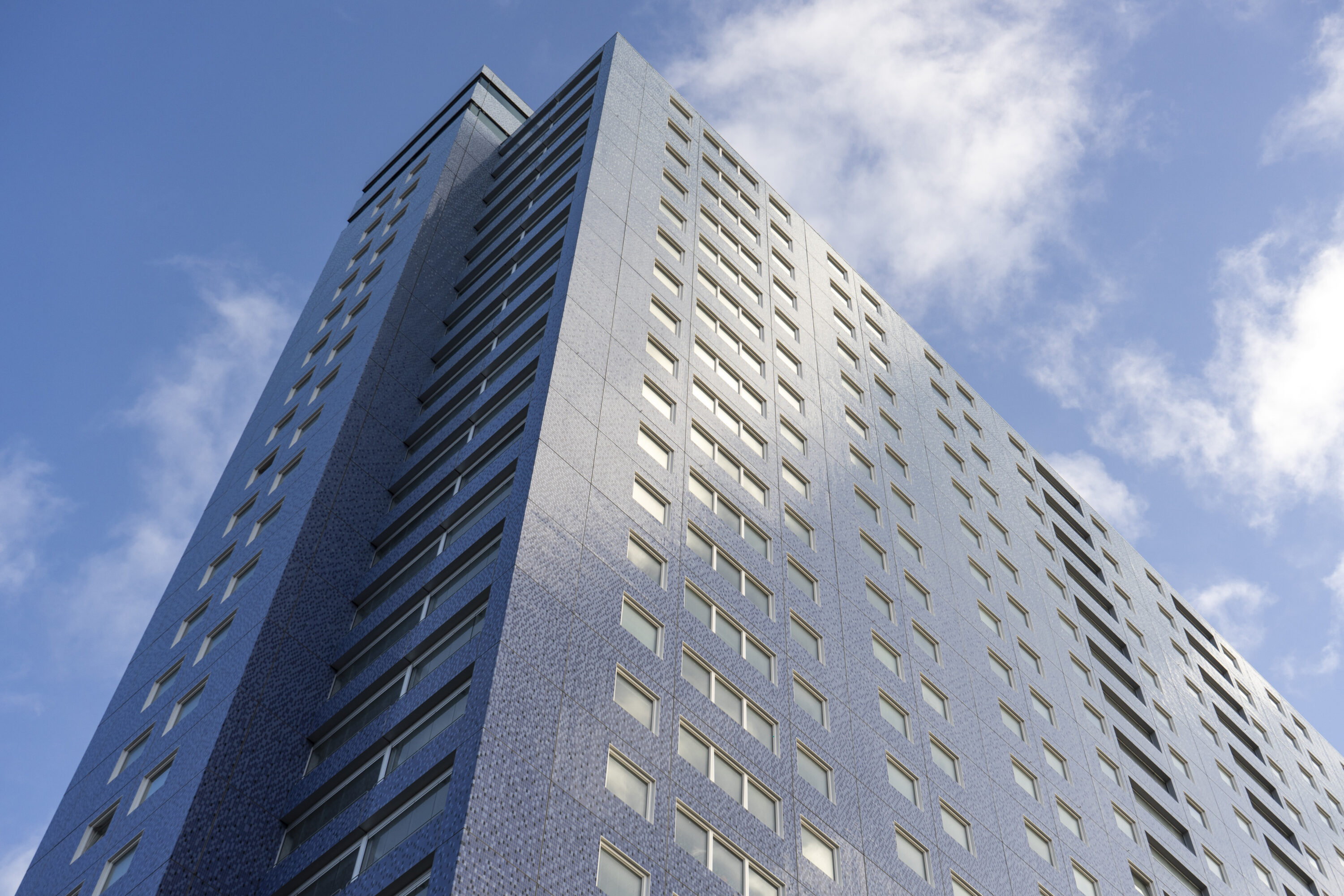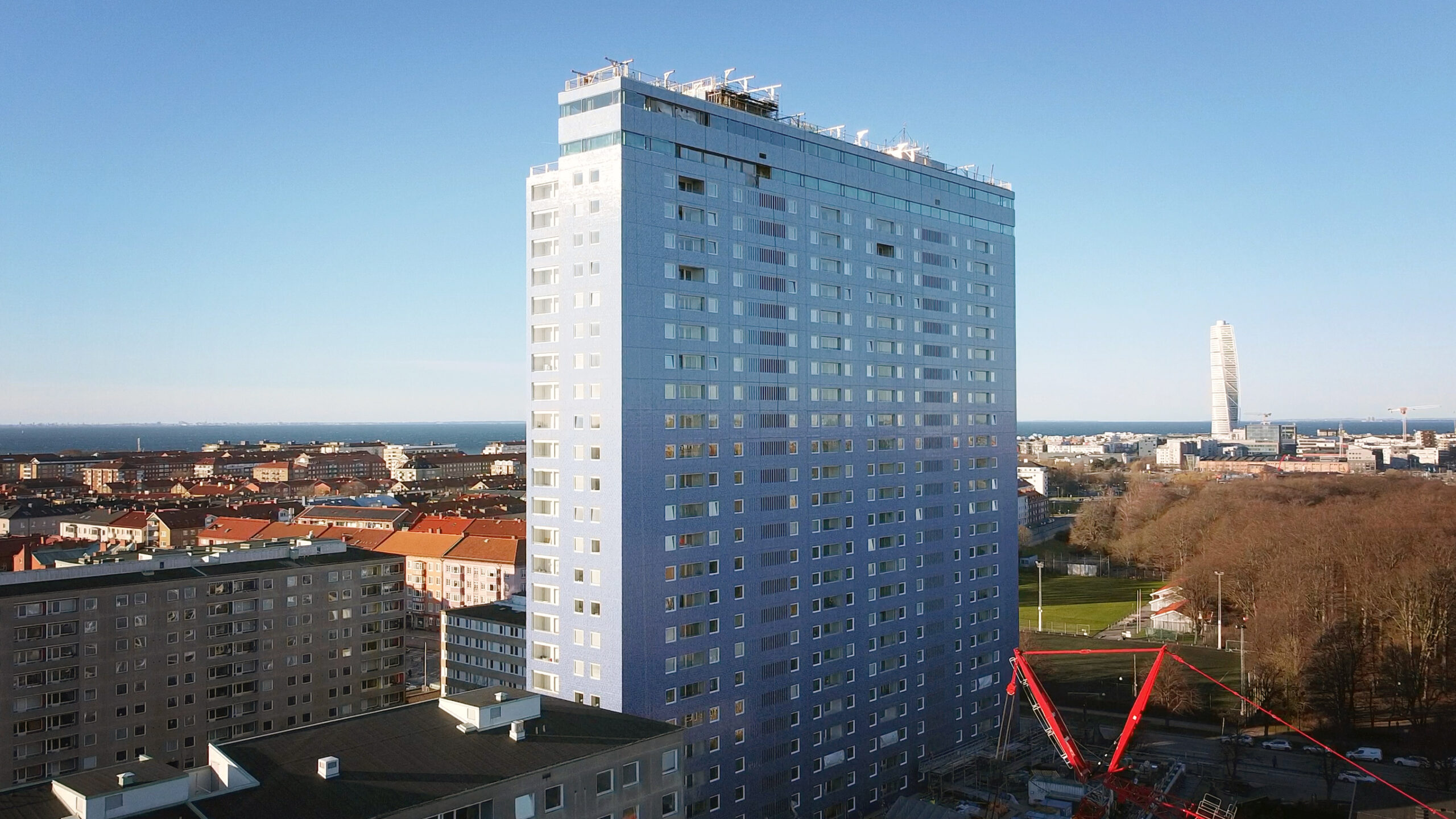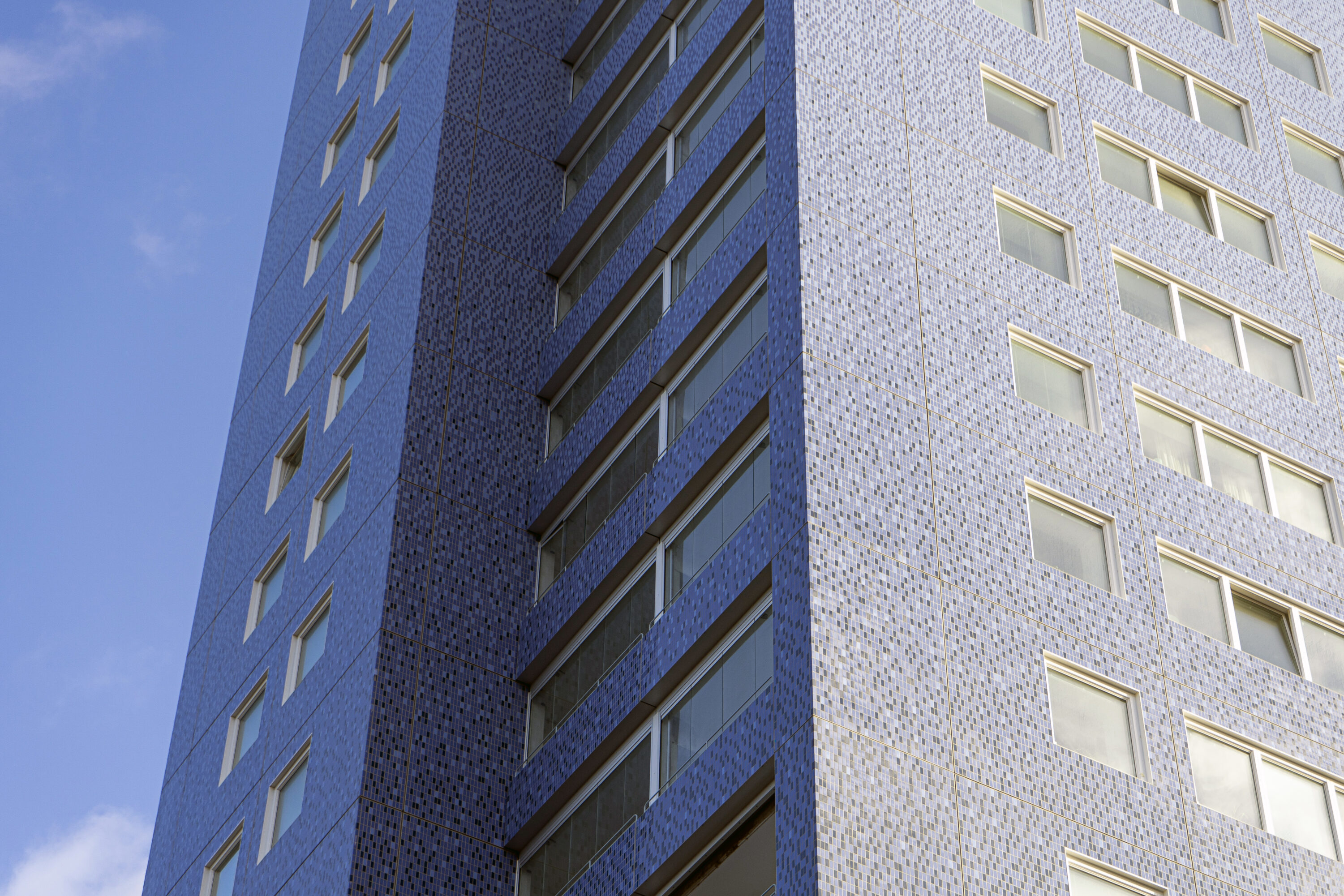2022-02-28
New facade completed on iconic Kronprinsen building
Nearly two million tiles are in place. Unique architectural values have been recreated on Malmö's modernist icon Kronprinsen, thanks to a specially developed method.
Completed in 1964, Kronprinsen is still one of Malmö's tallest buildings and most important landmarks. Twenty-seven stories high, with a facade of blue mosaic tiles in varying shades that lighten towards the top of the building.
- One of the most important sustainability tasks we have in front of us is to preserve buildings from this era and from the Million Programme. With Kronprinsen, we took on the most difficult task straight away. We have extended the lifespan by another fifty years - without it being noticeable," says Andreas Jentsch, commissioning architect.
FOJAB was commissioned by the then-owners Akelius to investigate how the worn-out facade could be renovated in the best possible way, and then to plan the rebuilding. Together with the collaborative contractor NCC and Fasadglas, which manufactured the façade elements, FOJAB developed a system for installing a completely new façade, including windows, on top of the old one. Only when the new facade was in place were the old windows taken down.
It has been a real precision job, both in design and construction. The new facade could not deviate from the original by more than a few millimeters.
- We wanted to maintain the character of the building while creating an efficient process for the patterning. In addition, we were keen to minimize disruption to the tenants, so that they could stay in the building during the facade renovation," says Andreas Jentsch.
1.9 million new tiles were placed in a mosaic designed using a specially written algorithm. This was developed by FOJABcode, FOJAB's innovation platform for data-driven design.
- The algorithm optimized the design and placement of the clinker sheets, creating a seamless blue gradient. Based on the 3D model, 1,700 pattern drawings were then automatically generated, one for each facade element, which could be sent directly to the factory for production," says Henrik Malm, architect and head of FOJABcode.
IFÖ, which supplied the original tile in the 1960s, has provided original recipes for colors, glazing and execution through its archives.
Kronprinsen is part of a city block that is undergoing an extensive renovation. The roof, windows and balconies of the high-rise building are also being renovated. Kronprinsen is now owned by Heimstaden.
Would you like to know more? Feel free to contact
Andreas Jentsch
andreas.jentsch@fojab.se, tel 0706 64 05 01
Henrik Malm
henrik.malm@fojab.se, tel 076 669 69 57


